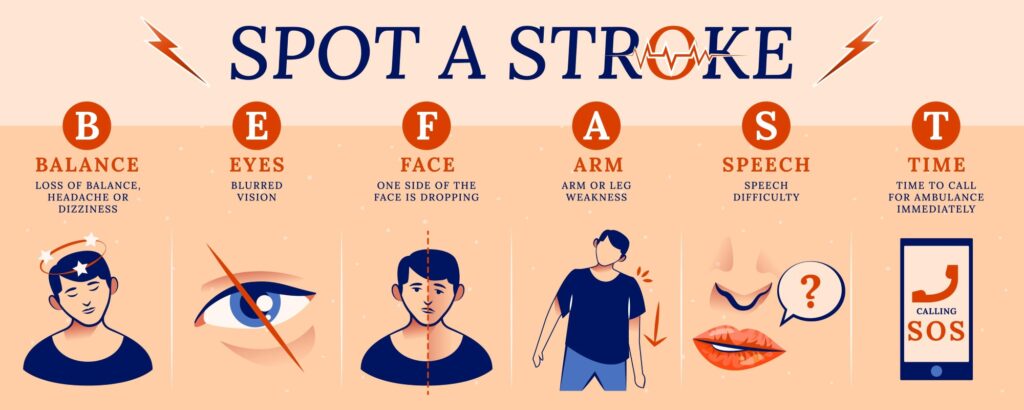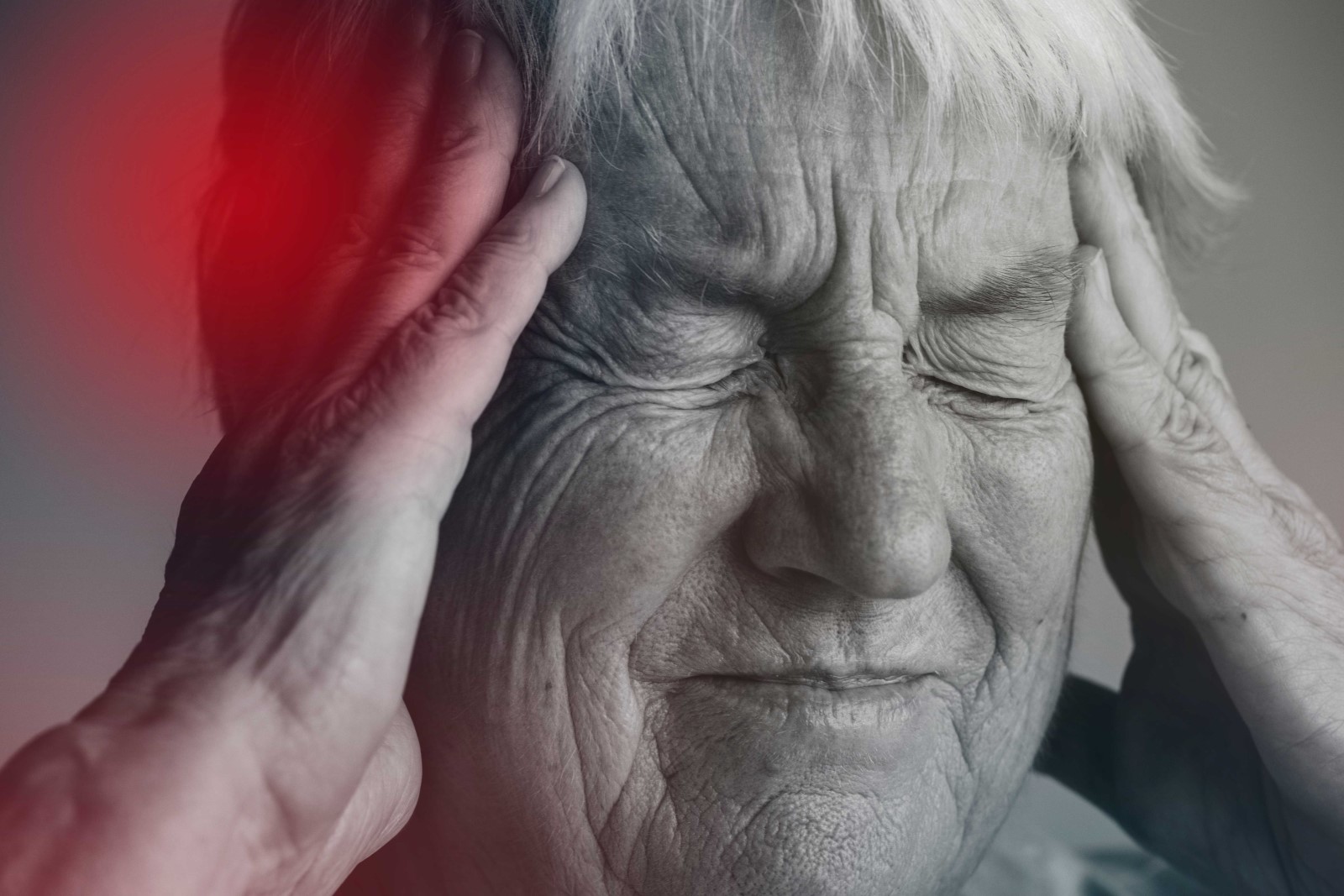Overview
Stroke is the medical term that describes the condition when the brain dies. The cause of stroke is loss of normal blood supply to brain tissue. A stroke is a medical emergency.
If you think you or someone around you has signs and symptoms of stroke, call for an ambulance (in the U.S. and Canada, 9-1-1) right away.
There are 2 main stroke types:
- Ischemic stroke—brain arteries are occluded or blood flow is reduced. Due to this occlusion, the brain doesn’t get sufficient amounts of oxygen and important nutrients. If this condition lasts longer than a few minutes, brain cells are damaged irreversibly. The initiator of the blockage could be the fatty deposits (plaque due to atherosclerosis), blood clot, or emboli (blood clot or other debris that travel through the bloodstream).
- Hemorrhagic stroke—Hemorrhage is the medical term for bleeding. Bleeding can occur within the brain (intracerebral hemorrhage) or on the surface of the brain (subarachnoid hemorrhage). In both cases, blood vessels rupture. Spilled blood collects in surrounding tissues, puts pressure on, and damages them.
The main causes of hemorrhagic stroke are
- High blood pressure
- Head injury
- Bleeding disorders
- Overtreatment with blood thinners (anticoagulants)
- Deformities in blood vessels (such as aneurysm)
- Irregular connection of arteries and veins (arteriovenous malformation)
A transient ischemic attack (TIA) is a condition when a person has the symptoms of stroke, but there is no sign of stroke on brain imaging tests. TIA could last from a few minutes to a few hours and doesn’t cause permanent damage. The reason for TIA is a temporary decrease of blood flow in the brain-supplying vessels. TIA is the sign that you have a high risk of stroke. Sometimes, it’s called a ministroke. You should get immediate help if you think you may be having a TIA or a stroke.
Risk factors
There are several modifiable and non-modifiable risk factors for stroke. Some of them are common for both ischemic and hemorrhagic strokes.
Ischemic stroke risk factors
- Age older than 40 years
- Male sex
- Heart disease (heart failure, heart defects, irregular heart rhythm)
- High blood pressure
- Smoking
- Diabetes
- High blood cholesterol levels
- Illegal drug use
- Heavy drinking
- Recent childbirth
- Taking birth control pills or hormone therapies
- Previous history of TIA
- Sedentary lifestyle
- Obesity
- Obstructive sleep apnea (OSA)
- Current or previous history of blood clot
- Family history of cardiac disease and/or stroke
Hemorrhagic stroke risk factors
- High blood pressure
- Smoking
- Illegal drug use (such as cocaine, methamphetamine)
- Use of blood-thinning medications (such as warfarin)
Sporadically, people without any risk factors could have a stroke.
Signs and symptoms
Classic symptoms of stroke are grouped in the acronym “BE FAST.” Each letter stands for the thing you should look for:
- BALANCE—trouble walking, loss of balance, stumbling
- EYES—vision disturbances, like blurred, blackened, and doubled vision
- FACE—sudden weakness or drooping of the face, usually on one side
- ARM—sudden weakness or numbness of one or both arms
- SPEECH—speaking difficulties, uncoordinated and slurred speech
- TIME—Time is crucial in stroke treatment. If you notice any of the above mentioned symptoms, immediately call for 9-1-1.

Other symptoms of stroke are sudden severe headache, vomiting, dizziness, and a change in consciousness.
Signs and symptoms of stroke may be similar to other diseases, but the differential diagnosis could be made only by a medical professional. Every minute is critical for a patient with a stroke. Emergency medical services (EMS) workers will evaluate and treat you as soon as they arrive. During the transportation, they’ll also treat possible dangerous complications of stroke (like seizures and loss of consciousness). That’s why it’s important to call an ambulance instead of driving yourself or someone else to the hospital.
Diagnosis
After a physical exam, a brain imaging test (brain CT scan and MRI scan) and blood vessel imaging tests (CT angiography or MR angiography) are done. The imaging reveals the type and the location of the affected area.
Other tests, like heart testing and blood analyses, are also done.
Complications
Stroke can cause transient or permanent disabilities. Complications depend on the degree and the location of brain damage.
- Loss of muscle movement (paralysis)
- Trouble walking
- Trouble speaking, reading, and writing
- Trouble swallowing or eating
- Memory loss
- Loss of cognitive functions
- Trouble controlling emotions
- Pain, numbness, and tingling sensations of affected body parts
- Changes in behavior and self-care
Prevention
Many preventive strategies for stroke are the same as for heart diseases. Here are some healthy lifestyle recommendations:
- Control high blood pressure
- Lower blood cholesterol levels
- Quit tobacco use
- Control diabetes
- Maintain a healthy body weight
- Eat a diet with fruits and vegetables
- Exercise regularly
- Treat OSA
- Quit heavy drinking
- Don’t use illicit drugs
If you have a history of ischemic stroke or TIA, your doctor may prescribe medications for stroke prevention:
- Anti-platelet drugs (aspirin, clopidogrel, ticagrelor)—this group of drugs prevents platelets from binding to each other and forming clots.
- Blood-thinning medications called anticoagulants (heparin, warfarin, dabigatran, rivaroxaban)—this group of medicines reduces blood clotting.
Sources:
UpToDate
Mayo Clinic







